This page is updated regularly. Please refresh the screen to see the latest news.
December 2025
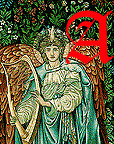
mazing how the year has flown! But before we wish you all a very happy winter holiday, let's see what this month has to offer. One conference notice strikes an appropriately seasonal chord: check out the second part of the recent, very successful Visual Theology event in New York. On the theme of "Beauty and the Revival of Faith," this part, to be held in Nottingham, will focus on hope and renewal. Abstracts are due early next year — and note that the event is "for those with or without faith." Keep up to date also with our latest book reviews: we have two new and (no exaggeration!) brilliant ones. Riya Das responds perceptively to Priyanka Anne Jacob's The Victorian Novel on File: Secrets, Hoards and Information Storage, an original and stimulating study that will make you think again, from a twenty-first century vantage-point, about the hefty Victorian novel. Robert O'Kell also applauds Naomi Levine's The Burden of Rhyme: Victorian Poetry, Formalism, and the Feeling of Literary History, finding it a valuable corrective to the negativity about Victorian poetry in the last century, and a worthy winner of NAVSA's prize for the best book published in 2024.

Another update: as well as working with these book reviewers, our Managing Editor, Diane Josefowicz, has put the podcasts presented by our History Editor, Dory Agazarian, on Spotify. So What the Dickens?! is now available in these places: Amazon; Apple Podcasts; and Spotify. It will be on Audible soon too. Do have a listen to these surprising, entertaining and (of course) informative productions!
Quite a different but very enjoyable subject for JB at the end of last month was the work of the foremost Victorian botanical illustrator, Walter Hood Fitch, literally the right-hand man of William Jackson Hooker, the first director of the newly established Royal Botanical Gardens at Kew. If you think this was a little world of its own, consider the case of the Victoria Regia (The Royal Water Lily) — the race to get it to bloom, the furore that accompanied the event, and its subsequent popularity as a design motif. JB also reviewed Naomi Stadlen's A Grand Quarrel: Elizabeth Gaskell, Florence Nightingale and Mothers Today, which throws light on both these important Victorian women, showing how the issue of motherhood arose and divided them, how their views later converged, and what this means for us today — an unusual cross-disciplinary study with wide relevance. JB's incidental work included adding G.F. Watts' painting, Love and Death, much admired by the young Oscar Wilde; and, now that we have Richard Doyle's eye-catching parody of it on the podcast "cover," Delacroix's well-known Liberty Leading the People.
Our Senior Editor, Simon Cooke, has also written a wide-ranging piece, in this case an illustrated essay highlighting important themes across several different media: "Romance in Victorian Culture: Secret Liaisons and the Waiting Woman in Illustration, Painting and Literature." Simon shows artists and authors across the board exploring the huge changes in Victorian life — recognising that women were "far from passive or de-sexualized," and presenting their struggles against society's expectations with varying degrees of sympathy and wariness (think of some of Rossetti's "menacing and ungovernable" women). Such interdisciplinary discussions simultaneously challenge and enlighten, exactly the aims of our website as a whole.

As well as being Senior Editor for the website, Simon is our Editor for Book Illustration and Design, and has notified us of the recent sad passing of Dr Graham Dry, the Munich-based specialist on nineteenth century applied art. In addition to his expertise in Jugendstil and all aspects of German design, Graham was a great collector of Victorian "trade" bindings, and a mine of information on, for example, Thomas Robert Macquoid: on the right is one of the stunning books in his collection that he photographed for us. Viewing the collection in 2021, Simon was astonished to see what is surely the most complete library of this type of material in the world. Most of all, he says, he will remember Graham’s warmth, unassuming manner, mischievous humour and generosity. He will be missed.
Turning back to new work on the site: our Contributing Editor in Canada, Philip Allingham, continues with his extensive and much-needed revisions of some of our very earliest material, on Dickens illustrators. One particularly interesting finding here was sparked by correspondent Alistair MacNichol, about an illustration for The Old Curiosity Shop signed by Phiz — but, as it turns out, from an original by George Cattermole — and, of course, thereby hangs a tale.
Still with Dickens, Andrzej Diniejko, our Contributing Editor from Poland, has added to our accounts of the author's family with an essay on his descendants. Many of these have kept their famous ancestor's flame burning in variety of ways, on the page, on the stage and on the platform. They continue to do so to this day. If only Dickens could have known!
Another piece of good news: Dennis T. Lanigan has now completed his overhaul of our section on Walter Crane's paintings, adding commentaries and many new works to it. For those who see Crane primarily as a designer, illustrator and theorist, paintings like Diana and Endymion and Neptune's Horses will be revelations. Dennis's fellow art historian Scott Thomas Buckle has very kindly checked through the whole section and, as on previous occasions, contributed some suggestions from his own enviable store of knowledge.
Correspondence: Many thanks to Christine Seawell for notifying us of some missing punctuation in Swinburne's poem, "By the North Sea." All such notifications are most welcome.
November 2025
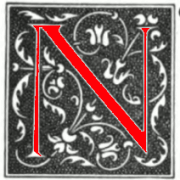
ovember got off to a great start on the Victorian Web, with a new system in place behind the scenes: watch out for some streamlining to our appearance in the weeks ahead! First, as usual, there are conference announcements to look out for, and if you've missed the deadline for applying for this year's Linda H. Peterson Fellowship (on 15 November), how about a visit to Auckland next June, for the enticingly entitled "Victorian Soundings" conference at the University of Technology there? The suggested topics include Victorian tabletalk, gossip and rumour. Plenty of scope there, even for the less technologically-minded.
As usual now, we have some new and very thought-provoking book reviews: Taten Shirley discusses Denae Dyck's Biblical Wisdom and the Victorian Literary Imagination, a subject in which our founder, George Landow, was especially interested — he is quoted a number of times in the book. Shirley's review concludes with a particularly "wise" quotation from Dyck's own conclusion, about the tensions involved between questioning and affirming, or between analysing and moving forward. But that is to simplify the issues too much: do take a look for yourself. Don't miss, either, Alyssa Q. Johnson's review of Duc Dau's Sex, Celibacy, and Deviance: The Victorians and the Song of Songs, which explores Dau's illuminating readings of canonical texts, and also of some more or less forgotten ones. Dau even includes, most intriguingly, a discussion of one of the painted pianos of the era (by Phoebe Traquair, for the Great Hall at Lympne Castle in Kent) — although this immediately justifies Johnson's complaint that some illustrations were needed. Last but by no means least for this month, there is Éadaoin Agnew's review of Kellie Holzer's Trans-imperial Feminism in England and India, which explores the way in which feminist ideas crossed geographical boundaries in the age of empire, and shows how a whole genre of Indian New Woman writing emerged. This usefully challenges us, as Kellie Holzer says, to reach "beyond the Anglophone" — an altogether fascinating read.
This month we're also delighted to announce an addition to Kirsten Guest and Ronja Franks' project, funded by the Social Sciences and Humanities Research Council of Canada, on "Horses, Their Roles and Welfare in the Victorian Age." Nancy Henry has contributed an eye-opening article on "Women and Nineteenth-Century Equine Economies," alerting us not only to horses' key roles in the economy throughout this period, but to the involvement of women in those roles. Again, a wonderful conclusion: "Studies of women and economic markets should keep horses in mind given that all nineteenth-century economies were in fact equine economies." Time, then, to give women their due in yet another area of Victorian life.
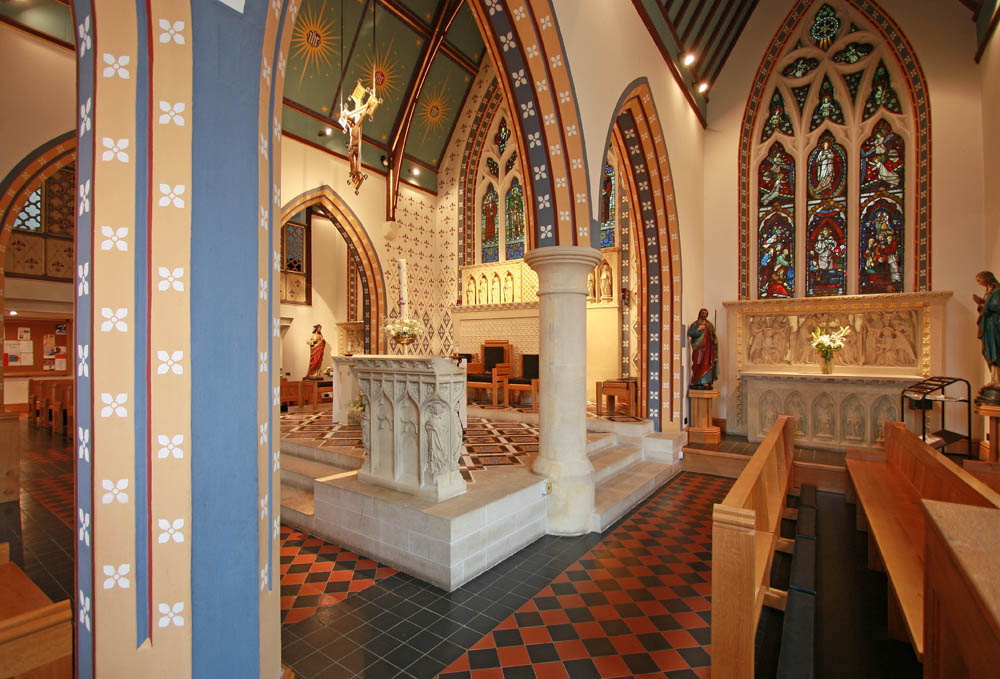
While Matthew Pontefract, our technological adviser, and Diane Josefowicz, our Managing Editor, have been handling these developments, JB has filled two notable gaps in our architecture pages. Some brilliant photographs by our contributing photographer John Salmon enabled her to write about A.W.N. Pugin's only complete London church, St Thomas of Canterbury, Fulham. Many thanks to G.L. Hyland for the inventory of this highly influential architect's work in the October edition of True Principles, the Pugin Society's Transactions, which brought this omission to her attention. JB also wrote about the Sandy's Row Synagogue in London, by the important synagogue architect, Nathan Solomon Joseph. It was touching to learn of his support for the struggling Dutch Jews of the East End, and of their gratitude to him. The interiors of both these lovingly maintained places of worship come as a surprise, reflecting the deep spiritual convictions of their architects.
Another new addition is an account from the Illustrated London News of the explosion on the Regent's Canal in 1874, which killed several people, destroyed a bridge over the canal, and severely damaged some neighbouring houses — including that of the artist Lawrence Alma-Tadema. Thanks to Shirley Nicholson for bringing this to our attention.

Philip Allingham, our hard-working Contributing Editor in Canada, has now completed his updating of William Jewett's illustrations for Wilkie Collins's The Moonstone. This was, as the magazine claimed, "richly illustrated," and the illustrations often draw attention to, or even add to, meanings that might otherwise escape the reader - several, for example, like this one of Sergeant Cuff reading the railway timetable, reflect on the nature of the reading experience itself, giving them a special appeal for those currently studying the complex impact of the illustrated text. It is taking quite a while to check through around seventy of these discussions. Only about half of the new versions are online so far. Since it has taken some time to put these online, Philip has worked on several other smaller revisions and additions, for instance, refurbishing the very enjoyable gallery of Phiz's illustrations of The Tale of Two Cities. He is now looking at John Mclenan's illustrations for the same novel, this time including a general discussion of Harper's use of headnote vignettes, prefacing an impressive gallery of the ones appearing in this novel's serial edition. See if you can follow the plot through the series of thirty-one scenes!
At the end of last month, Andrzej Diniejko, our Contributing Editor from Poland, sent in some very welcome new material on George Egerton, prompting JB to open a new section on her. Material about her life has now been joined by an essay on her best-known work: "George Egerton's Keynotes as a Daring Portrayal of Victorian Women's Sexuality." We're pleased to report that Andrzej has recently retired from the University of Warsaw and plans to spend more time on his "New Women" project.
This month also sees the beginning of another full-scale revision project by our knowledgable art historian, Dennis T. Lanigan, a particularly challenging one this time: the subject is Walter Crane, whose versatility was quite extraordinary. The project has begun with a portrait of Crane by William Rothenstein, and Dennis's new brief but more comprehensive biography of him. JB pitched in to add G.F. Watts's well-known portrait of him, which was greatly admired by Henry James. Of Dennis's additions, a favourite so far is Crane's At Home, A Portrait. Much more to come here.
Correspondence: The Collections Manager of Auckland War Memorial Museum, who wrote in recently about a quilt in the museum's collection made by Trooper Pearson, veteran of the Crimean War, kindly allowed us to use an image of the quilt in our account of him. Michael Leach wrote in with some more information about the prominent York architect, Edward Taylor (see "note" on that page), and has since offered a biography of Taylor's pupil, Daniel Porter Fordham, an architect who clearly benefited from his training. Other e-mails include a request to reproduce one of our contributing photographer Colin Price's photos of a stained glass window for personal Christmas cards (freely granted), and an update from professional photographer Simon Brown, about Charles Rennie Mackintosh's work at 50 Glebe Place in Chelsea. Thanks to all for taking the time to write in!
October 2025
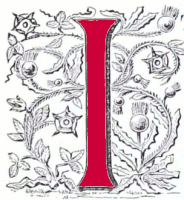
t really is the season of plenty here on the Victorian Web, with work from the end of the last (short) month finally going online, and new work coming in every day.
First, an important announcement! Our latest podcast is out: this time, our history editor Dory Agazarian takes us back to that glittering showpiece of the Victorian age, the Great Exhibition of 1851 in London's Hyde Park, where she unravels the story of the largest "exhibit" of all. The architects of the famous Crystal Palace had to build over it, and the controversy it represents still rages today: do listen!
Then, as usual, take a look at the conference announcements, because these can be time critical — although the most enticing may be the rolling calls for reviews or entries in collections. And if reviews appeal, don't forget that Diane Josefowicz, our managing editor, offers a wide choice of our own books for review.
The first new book to be discussed on our website this month was Helena Esser's Ouida: Sara Murphy's detailed review makes it quite clear that Ouida, a once neglected but fascinating author, fully repays this new critical attention. The next review is by Sheldon Goldfarb, another very welcome new contributor, who casts a discriminating eye over Frederick Nesta's collection of wide-ranging scholarly essays on Where Victorians Got Their Reading: Cultural Change in Marketing, Distribution, and Individual Access for "The Million" in Britain, North America, and Australia. Life seems to be changing rapidly now, but the spread of literacy in Victorian times also promoted radical changes at every level of society. One of the most controversial of these, the rise of the "New Woman," is the subject of another new book review, by another new contributor: Joellen Masters looks at Claire Allen-Johnstone's Dress, Feminism, and New Woman Writing, in which a wealth of material needed stricter editorial trimming — but which still makes a valuable addition to the body of recent research linking New Woman literature and costume studies.
Change was all around.... as so often, batches of photographs have enabled JB to write accounts of some of the architectural gems of the Victorian period. Ian Capper's fine set of pictures of Old College Aberystwyth shows the extent of J. P. Seddon's Gothic Revival work on this pioneering Welsh institution, while Rosy Hayward's visit to her alma mater (where she studied architecture) produced photographs of each of the Queen Anne style "Champneys Buildings" at Newnham College, Cambridge. There were some unexpected bonuses at Aberystwyth: the seal designed for the new University of Wales by Edward Burne-Jones; a statue of the Welsh politician Thomas Ellis, by Goscombe John; and mosaics by C.F.A. Voysey.
Revisiting our recently-opened section on New Zealand, JB also wrote about Christ Church Cathedral there: you may remember that this was so badly damaged by earthquakes in 2010 and 2011 that there was talk of demolishing it. What you may not know is that it was designed in the "home country" by George Gilbert Scott. Fortunately for his legacy there, it is now in the process of restoration. A late nineteenth-century account of the whole area — "Christchurch (Ōtautahi) and the East Coast of South Island" followed. Moving to the North Island, JB found that the Bishop's House and St-Matthew's-in-the-City in Auckland were both by important British architects, Peter Paul Pugin and Frank Loughborough Pearson repectively. Anthony Trollope had foreseen a bright future for Auckland when he visited in the 1870s, and JB added his account of it here.
All ready for Hallowe'en, our senior editor, Simon Cooke, has contributed an essay on "William Strang's Dark Imagination," featuring a set of this artist's book illustrations calculated to send shivers down your spine even on the warmest autumn day. Don't say we didn't warn you! Through Simon, too, came something much more material: extra resources for scholars of the Victorian material book, in fact, kindly sent in by Ed King.
One larger project has now been completed: our contributing editor Philip Allingham has worked through John McLenan's two sets of illustrations for Wilkie Collins's No Name. A favourite is Magdalen studying her lines for an upcoming play while having her hair combed out by a lady's maid. This is before the plot (both on and off stage) begins to thicken.... But to appreciate the extent of Philip's work here, take a look at the list of illustrations and look up a more dramatic pair, such as these two scenes of spying and hysterics!

Meanwhile, Dennis Lanigan, for some years now the main contributor to our paintings section, has amassed a large amount of material on John Melhuish Strudwick, and has revised and added extensively to the section on him. Here, for example, is an account of Strudwick's early Love's Music, which, as Dennis himself says, is "an astonishing accomplishment" for such a young artist. But perhaps the most celebrated of Strudwick's works is The Ramparts of God's House (shown above right), which Dennis himself (not given to hyperbole) calls "spellbinding."
Less reverent, more quirky, sometimes irascible and now often neglected — the artist Fred Weekes enlivened not only canvas, but walls, doors, windows and furniture as well, often as one of the team of artists working for the architect William Burges. A new contributor, Bev Reynolds, has set herself the difficult task of gathering his various works together for us. We are so pleased to give Weekes his place in the spotlight for a change, and it seems just the right moment, as an auction house has reported a gratifyingly high price for the sale of one of his sets of paintings. We have permission to reproduce the set, so more on this soon.
Before leaving the visual arts section, note that we have another new review there too: long-time reviewer, exhibition-goer (and amazingly prolific translator) Laurent Bury has reviewed Caroline McCaffrey-Howarth's Lady Charlotte Schreiber, Extraordinary Art Collector, reminding us of yet another field in which women's initiative and sensibilities have made them important players in Victorian cultural life.
Returning to the literary world, it was a particular pleasure to add praise for a friend of the Pre-Raphaelites working in a different genre — Sylvia Hornsby's second contribution on George Meredith is an appreciation of his "Sensory Writing." If more people approached Meredith in this way they would enjoy his novels and his poetry much more, and understand it much better. It is surely the most appealing aspect of his work.
Lucy Dull has also sent in a new piece: a chronology for boys' adventure novelist (author of Coral Island), R.A. Ballantyne. It would be strange indeed to have a large section on children's literature which overlooked this astonishingly productive and popular author.
Correspondence: Just to say, first, that Shirley Nicholson, a contributor who also does so much proof-reading for us, is in hospital at the moment, but continues to send in valuable suggestions. We very much hope that she will soon be home again. Thank you, next, to V.S. Sambandan of the long-established Hindu newspaper in Chennai for his warm appreciation of our section on the Indian railways. The newspaper has now published its ebook on the subject, with an opening illustration from our own pages. Thank you also to artist John Hutchinson for his appreciation of our "elucidation" of an orientalist painting, and for sending in a sample of some of his own very attractive work; and we're grateful as well to Alden Loveshade, for alerting us to a broken link.
In other news... Catherine Taylor of Flame Tree Publishing wrote for permission to use one of Philip's scans as the back cover image of a new edition of Wilkie Collins's The Moonstone. And Anna Beazley of the Auckland Museum reports from New Zealand that they have a heirloom quilt in their collections sewn by "Trooper Pearson" — we've featured Pearson, and we've featured army quilts, but now, it seems, we can actually make a connection. Which, of course, is what we're all about!
As for connections, strangest of all, visual anthropologist Anita Loshmanova wrote in to say that she thought she recognised her brother as a little boy in a photograph we reproduced, that was taken in Africa in 1972. We were able to confirm the truth of this, and add to the family's memories of a long-past era. Perhaps you need to be a visual anthropologist to spot such a connection!
September 2025

ummer has slipped away, and a new academic year is set to bring fresh opportunities. Some of these can be found in our conference and Calls for Papers listing. One example is the Virtual Theology Conference, "Imperfect Beauty: Visions of Fractured Faith," looking at cross-currents between the visual arts and the theological ideas of the medieval era, the nineteenth century, and today. You can attend online but the venues sound wonderful if you can make it in person: the Salmagundi Club and Met Cloisters in New York. That's on 24-26th October. Another tempting example: a call for papers on the themes of "Ecology, Landscape, Environment" for next summer's Tennyson conference in Lincoln, which has its own appeal for Tennyson lovers. The deadline for abstracts is at the end of January, so there's plenty of time to plan for this one. Be inspired!
Talking of projects, our latest big one is now taking shape on our own website. Just to remind you, the topic here is "Horses in the Victorian Age," and we've just put online the fourth article on it: "Human-Equine Entanglements in the Nineteenth Century: Scholarship of the Victorian Horse," by Ronja Charlotte Frank. The articles are being peer-reviewed under the direction of Kristen Guest (University of Northern British Columbia) and Ronja herself (Memorial University, St John's, Newfoundland), and form part of the Equine Breed and the Making of Modern Identity project, funded by the Social Sciences and Humanities Research Council of Canada. We're delighted to be hosting this: horses were such a vital part of Victorian life that this collection will illuminate a whole range of areas, from literature and the visual arts to technology and the economy — and tie in with a good deal of pre-existing material on our website.
Noteworthy also this month are two new book reviews. One is D.J. Sheppard's substantial review of Oscar Wilde and Nihilism, by Colin Cavendish-Jones, one of those illuminating books that show how the swirl of ideas in a given period both emanates from and informs a variety of oeuvres. (Another example, looking at the same period, is Alexander Bubb's Meeting Without Knowing It: Kipling and Yeats at the Fin de Siècle, also discussed on our site.) The other new review this month, also very thorough, is by Lindsey Carman Williams, of Riley McGuire's Dysfluent in Fiction: Vocal Disability and Nineteenth-Century Literature, which looks at the way vocal disability (from stammering to mutism) is treated in nineteenth-century literature and writing — again, most illuminating. Our Managing Editor, Diane Josefowicz, has a list of new books available for review, and is handling the editing process here. To repeat: be inspired!
New online this month, too, are introductions to both Sir Walter Tapper, the architect responsible for some outstanding turn-of-the-century Arts-and-Crafts churches; and the art-metalworker William Bainbridge Reynolds, who worked with Tapper at the Grade I-listed Church of the Ascension, Malvern Link. JB was particularly grateful to Philip Halling for his photographs of the church's exterior. Photographs from other sources, including our own contributing photographer Colin Price, have also sparked new explorations. We now have accounts of the Trefechan Bridge in N. Wales, a worthy successor to an earlier one by John Nash, washed away in flooding; the Old Admiralty Building at Horse Guards in Whitehall, an enormously fraught project which took years to complete; and the Guards Division Memorial nearby, which involved the sculptor Ernest Gillick in rather an unexpected way, as a letterist. The new work on Victorian architecture inspired a long overdue updating of our bibliography in that section.
Another reminder of the past is Henry Tanworth Wells's Letters and News at the Lochside, a painting which includes one of his friends on their Scottish fishing expedition: John Everett Millais. Can you spot him?
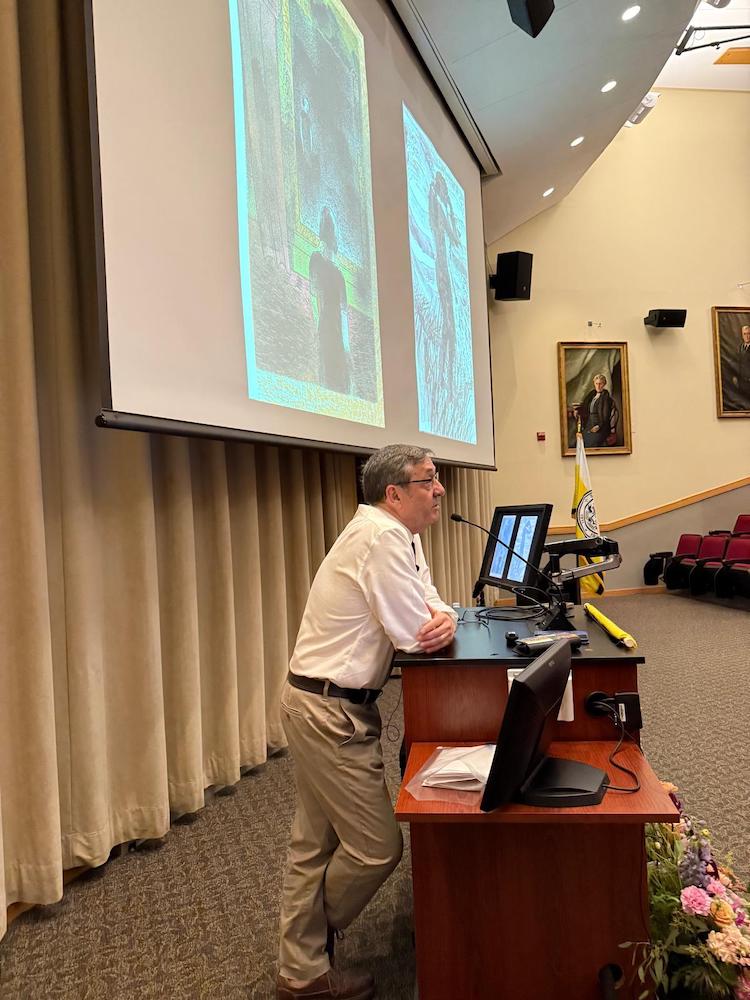
Before setting off for America to give the Fox-Adler lecture at Skidmore College, Saratoga Springs on 14 September, on "Ghostly Traces: Illustrations of the Victorian Supernatural" (the theme of his latest book), our Senior Editor Simon Cooke took an entertaining look at "David Lean’s neo-Victorianism: Oliver Twist in the Twenty-First Century." Simon illustrates his discussion with well-chosen and atmospheric stills from the classic film adaptation, showing how, with a knowledgeable guide, cinematography can offer us new entries to the classics, while telling us much about our own times as well. We're glad to report that Simon has now returned after a very successful visit to Saratoga Springs, which he greatly enjoyed.
Meanwhile, our Contributing Editor Philip Allingham's latest offerings are William Cubitt Cooke's illustrations for Dent's 1894 edition of Jane Austen's Persuasion, and Zoffany Oldfield's for Walter Crisp's well-received continuation of Dickens's The Mystery of Edwin Drood. As well as a gallery of the Drood illustrations, and comments on the individual engravings, Philip has transcribed a contemporary review of the continuation, the author of which admires Crisp's version, if rather grudgingly.
The latest report from Sambourne House, by Angela Bolger, is about the evocative soundscape ("stereophonic, layered sound with panning") being played in the beautifully preserved dining room there, complete with the noise of passing horse-cabs and bells ringing from the parish church, as well as sounds from inside activities. With a little bit of help from modern technology, we can experience the Victorian age in a variety of new ways.
From much further afield — Kia ora! From the Western Bay of Plenty in New Zealand comes an account of the settlement of Katikati in the 1870s, thought to be the first Ulster Irish settlement in the world. Sent in by Sandra Haigh, Community Heritage Services Co-Ordinator there, this brings to our notice the pioneering photographer, Emily Surtees, who returned to England in 1886, but visited New Zealand again in 1898, leaving a wonderful record of those early settlers. Scope for more research here! In the same section, we also have an illustrated article, transcribed from a well-illustrated early twentieth-century New Zealand periodical, on the kinds of houses these resourceful newcomers built, progressing from sod huts to town houses. Ah, New Zealand, trumpeted surveyor and engineer Charles Hursthouse, "The 'Britain of the South'"!
Correspondence (etc.): Many thanks to Bev Reynolds who presented us with proof positive that the art-decorator Frederick Weekes lived for several years longer than most sources say that he did. We hope to have more on Weekes (who worked with the gifted architect William Burges, among others), before too long. Thanks also to Pam Pickard, who noted that we had shared a common confusion between the Manchester architect Thomas Worthington and his architect nephew Thomas Locke Worthington, when it came to their writings on housing reform. We were very glad to make the distinction clear.
August 2025
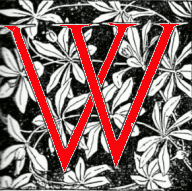
hether August finds you on the beach relaxing, or at the desk meeting deadlines, make a note of upcoming opportunities to share your interests, or perhaps develop new ones. Our Managing Editor, Diane Josefowicz, comments that next year's conference on Robert Louis Stevenson in Venice, "(Un)natural Stevenson: Wild Transgressions across literature, ecology, science and gender," sounds particularly tempting. Abstracts are due by the end of November, so there's plenty of time for you to exercise your imagination.
Diane has already been busy exercising hers, with her new book, Guardians & Saints: Stories, coming out from the Cornerstone Press at the University of Wisconsin-Stevens Point in October (offline link to pre-order here). Spoiler alert: one of the stories was inspired by Luke Fildes' touching, much-loved painting, The Doctor. Congratulations as well to our Senior Editor, Simon Cooke, whose equally tempting Illustrating the Victorian Supernatural is coming out later this very month from the University of Ohio Press. Since an advance copy has already materialised on our desk, you can find out more about the Victorians' artistry/mastery of spookdom in a review by our own Gender Matters editor, Jo Devereux.


Meanwhile, but no less inspiring, some major recent projects are now complete. Philip Allingham, our Contributing Editor from Canada, finished updating and adding to the galaxy of Kyd illustrations of Dickens characters, and immediately turned to Harry Furniss's dramatic visualisation of events in Our Mutual Friend — catch a glimpse of Furniss's vigorous, impressionistic style here, in the scene of Lizzie Hexham rowing out deeperately to snatch her lover from a watery grave! For his part, Dennis T. Lanigan has extensively revised and augmented our sections on Frederick Sandys's paintings and drawings, one of the last paintings to come in being the irresistible Ysoude with the Love Philtre, and one of the best-known drawings being his petulant Proud Maisie. No, the Victorians weren't always sentimental about female beauty! In between these enterprises, Dennis indulged in the wonderful distraction of writing about John Lucas Tupper's portrait medallion of William Holman Hunt. Dennis is now turning his attention to Sandys's illustrations.
If you think that such major Victorian artists saw book and periodical illustration simply as a sideline, take a look at Simon's latest piece. This is a painstaking study of Dante Gabriel Rossetti's successive preparatory compositions for his sister Christina's book, The Prince's Progress — a process of refinement that adds nuances and resonance to his sister's work without in any way undermining its primacy. This study was followed by another, equally meticulous and revealing, of Rossetti's minutely detailed notes on the proofs at the final stage of production — the very first study of them. There are all kinds of art-writing on our site, including, but not limited to, the technical (the materials used, and how they were used), the historical (what the artists' contemporaries thought of them, and how their work relates to that of their peers) to the freshly and penetratingly original. All are needed; all are valuable; all increase our understanding and enjoyment. Simon combines these approaches so well, and so readably. Incidentally, while writing about these illustrations, Simon also replaced some of the older illustrations in this section with greatly improved scans.
A mammoth endeavour which also utilises all the different approaches to art history is Francesca Tancini’s forthcoming Walter Crane: Books in Colour. In his review, Simon shows how this two-volume publication both catalogues and discusses the whole of Crane’s extraordinary output, in all its relevant context, from the personal to the cultural, including (and this is of particular interest) the working relationships involved. When these volumes come out in the autumn (on 23 September), they will be an essential ressource for everyone working on Crane, and indeed, on this whole area.
In another section of the arts, JB has continued her work on the two distinguished architects sharing the name William White. We now have full entries on All Saints, Notting Hill, as well as St Saviour's, Aberdeen Park in N. London, the latter a truly remarkable church, perhaps the most notable of the younger William White's buildings (a special thank you here to Finn Fahey, for the first photograph, and Strettons, the estate agents who allowed us to draw on their gallery of interior photographs). In a related area, JB added another Victorian hymn to the hymn section, this one with words by the prolific (Scottish) poet-preacher Walter Chalmers Smith, and melody by the gifted (Welsh) poet, bard and preacher John Roberts — a wonderful combination. This is the well-known "Immortal, Invisible, God Only Wise."
In another, quite different area, the recently opened section on New Zealand, JB also stole time to read and review Bee Dawson's Lady Painters: The Flower Painters of Early New Zealand, a book recommended to her by one of our contributors, the art historian Pamela Gerrish Nunn. This is as much a social history of early settler life as an art book. Still, it led to a new introduction, in the painting section, to flower painting as a popular Victorian genre.
We also opened a new section on another best-selling Victorian children's author, H.W.G. Kingston. As in the case of Charlotte Tucker last month, JB was helped here by Lucy Dull, who has created an informative timeline — quite a challenge, since Kingston was hugely prolific and as widely travelled as his boys' adventure stories suggest. Such additions are valuable, because boys tend to get left behind in the new field of gender studies.
The pendulum has swung in a different direction in studies of social class, too: here, the focus is less on the privileged and more on the entrepreneural middle or struggling lower classes. All the more welcome, then, is Christopher Stray's useful introduction to the 1864 Clarendon Report on the major public schools. In fact, this helps to explain why the pendulum swung, and indeed needed to swing, with the sons of the Victorian élite still being admitted to the top schools on grounds other than ability, and encouraged to study classics almost to the exclusion of maths and science: the Commissioners' proposed public school curriculum gave a scant three hours a week to "Arithmetic and mathematics".
Talking of changing attitudes, nothing could be more welcome or timely than Joti Bilkhu's review of Chris Foss's new book, The Importance of Being Different, which examines Oscar Wilde's fairy tales from the perspective of disability studies. It is heartening to see Wilde presenting the physically "atypical" in positive ways, giving them significance and centrality; to see, too, how his fall from grace reinforced his humanity in relation to the "disability aligned." Joti gives some useful pointers to omissions here, another reason why anyone in this area would benefit from reading her thoughtful review.
Patchy progress is better than none at all, and Andrzej Dinienko, our Contributing Editor in Poland, has given us a sobering look into the all-too-likely future in a piece on "William Delisle Hay's The Doom of the Great City as an early modern tale of urban apocalypse." As smoke from Canada's wild fires drifts towards London, and smaller wild fires rage much nearer home, it is all too easy to believe in Hay's harrowing scenario — "an evocative reminder of unsustainable human practices." He was writing in 1880. Do we still have time to do something about this?
Many thanks to both Scott Buckle and Shirley Nicholson for their continuing and valiant efforts to eliminate typos and broken links.
Correspondence (etc.): Amongst the usual queries (often about artwork, which Dennis has kindly been helping with, or Dickens, which Philip generally answers) was an email from Madelaine Davidson, who described herself as a "big fan" of our "incredibly charming website." A similar comment accompanied another e-mail, from Alexander Shamonin, usefully pointing out a broken link in the social history index. On the other hand, we noticed a review of the site which rated it as valuable but "sprawling." Well, yes, fair enough. But since we intentionally operate by links.... and links ... and links..., we hope that is part of its charm! Don't forget also that we do have a search engine, so if you need to get straight to a particular topic, you can. For more detail how to navigate our site, see here; and if you want to know where our material comes from, click on the name at the top or bottom of each page, and you can find out about the contributor. Yes, we are all real live bona fide Victorianists!
July 2025

uly is hot, hot, hot so far! But starting this month's entry on 4 July seemed propitious, at least for our American audience (Happy Independence Day!), and we already had a good crop of new work to share.
Prompted by a well-read young American correspondent, Lucy Dull, JB opened a new section on the author Charlotte Maria Tucker, whose pseudonym says quite a bit about her: she was the high-toned "A.L.O.E." or "A Lady of England," who nevertheless spent many years in India and produced a vast number of children's books. These were heavily didactic even by Victorian standards. Still, they were extremely popular and she definitely deserves a place in literary history. Lucy contributed very usefully by listing those of Tucker's works for which she could find online sources.
Thanks to a batch of John Salmon's photographs, JB went on to write an account of Lewis Vulliamy's St Michael's, Highgate, to which the coffins of Coleridge and his family were later moved. This is a landmark church, partly because of the height of its spire (as mentioned by Dickens) and partly because it overlooks Highgate Cemetery. Besides, it was extended and reordered by G.E. Street while he was working on the Law Courts in the Strand — and was significantly enriched later by Temple Moore. All in all, it seemed high time that we included it here.
These new and enlarged Victorian churches required a fleet of clergymen, and towards the end of the month JB reviewed a book about one of them: David Gurney's A Remarkable Clerical Career: The Life of Archer Gurney, Priest and Poet (1820-1887). Here was a High Church curate who moved from church to church in England, France and Wales, battling to make a difference, in practice and in his writings, to the religious life of the times. He had more success than he seems to have realised, and his story is an illuminating one.
To a different subject now: our Contributing Editor, Philip Allingham, is still busy revising the section on the unique Dickens illustrator, "Kyd," starting with some of his most famous caricatures for cigarette cards. This has given rise to some fascinating discussions, for example about Kyd's treatment of Fagin — which takes account of Dickens's developing view of him.
Another very long-term contributor, the Ruskinian authority, James Spates, has provided some favourite passages from Ruskin's writings, along with brief commentaries, to encourage us to explore the sage's voluminous writings. So far we have three, all emphasising the power and rewards of seeing, of being fully alive to what lies around us. His piece on Ruskin's views of clouds, inspired by the Victorian critic Mary Russell Mitford's discussion of Ruskin, will surely make you appreciate these writings more.
Ruskin also did much to draw attention to a gifted member of the Anglophone community in Florence, Francesca Alexander. Most welcome, then, is Pamela Gerrish Nunn's review of Jacqueline Marie Musacchio's timely reminder of her gifts, through a detailed study of her life and art.
It may be a little premature to mention that Dennis T. Lanigan has completely revised and hugely extended our section on the Pre-Raphaelite artist, Frederic Sandys. This work awaits its final check, but, as a foretaste, we now have discussions of Sandys's famous Medea, and, perhaps even more celebrated because of its celebration of the older woman, his marvellous portrait of Mrs. Susanna Anderson Rose. These are very valuable additions to our paintings section.
A more recent contributor, Simon Shouler, has now sent in a discussion of the Victorian restoration of St Remigius's Church, Long Clawson, where he officiates. His discussion is both well-informed and fully illustrated, and all the more welcome because we have very little from his part of England — Leicestershire, which is so rich in Victorian buildings as well as history. Hopefully we can make up for this shortfall now.
From Emeritus Professor François Grosjean comes another notable new account, this time of the French artist Henri Fardelle, who became very much part of the English cultural scene in the early Victorian period. As well as a question and answer session on the decoration of the new Houses of Parliament, the account includes a reproduction of Fardelle's dazzling treatment of the subject of Othello Relating the Story of His life to Brabantia and Desdemona, from the collection of the Royal Shakespeare Company.
It was a special pleasure to receive an account by Hilary Oldham of another splendid stained glass window by the designer A.K. Nicholson, featuring Elizabeth of Hungary and Joan of Arc — a reflection of contemporary interest in women's roles.
Correspondence: Huge thanks this month to Erica Tinsley, who spotted that work by the architect William Henry White had been mistakenly added to the section on another architect, William White. The confusion is understandable enough, but both were distinguished in their own right: William Henry White designed two prestigious buildings in what was then Calcutta (notably, the impressive Court of Small Causes in Kolkata), and then became for many years the much-respected Secretary of the Royal Institute of British Architects. Thank you so much, too, to Madelaine Davidson, who wrote to say she is "a big fan of the website," and to ask about one of the paintings featured on it. Dennis T. Lanigan kindly provided the necessary information.
June 2025
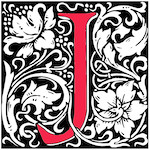
une soon brought some new and very welcome contributions to our website. But first, please note that one of last month's very tight conference deadlines has been extended: the University of East Anglia's autumn conference on alliteration, is now accepting abstracts for papers up to 30 June. So if you had too little notice before, do have another think about it. And, in general, keep on checking the list for conferences and calls for papers — also the list of books for review, another initiative of our Managing Editor, Diane Josefowicz, which is already attracting a lot of interest.
We're delighted to share the news that "Horses in the Victorian Age," part of the Equine Breed and the Making of Modern Identity project, is now underway in our history section. The project is funded by the Social Sciences and Humanities Research Council of Canada, and the articles have been peer-reviewed under the direction of Kristen Guest (University of Northern British Columbia) and Ronja Frank (Memorial University, St John's, Newfoundland). The first three are now in: "Changing Horses: Equine Encounters in the Later Nineteenth Century," by John Stokes, "Equine Narrative Labor in the Victorian Novel," by Sinan Akıllı; and "The Knacker," by Amy Bracey. "At what point," asks John Stokes, "in purely literary terms, did the horse retreat from being a universal if often unremarked presence, to occupying a more marginal and more symbolic role?" We look forward to seeing how these and many other questions are aired in this new and wide-ranging series.
Partly thanks to some material on our old sister-site, the Postcolonial Web, JB has opened a new section on New Zealand. This was inspired by an e-mail from a heritage officer there: we already have the English translation and a discussion of the contentious Treaty of Waitangi of 1840, and an informative account of growing up in Katikati on the North Island at the end of the Victorian period (you can hear a tiny snatch of the song of the grey warbler or "riro-riro" here).
Our Senior Editor, Simon Cooke, wrote the first of June's important new contributions, one that has been brewing for some time: "Visualizing Horror: Illustrations of Jack the Ripper and His Victims." Not for the fainthearted, this usefully recognizes the artist's potential to disclose and embody our fears in a distinctive iconography (to partially quote Simon). Sadly, this is as relevant to us now as it was to the Victorians, if not more so. Simon later added an introduction to the Illustrated Police News, the source of many of the most lurid and sensational images of the case.
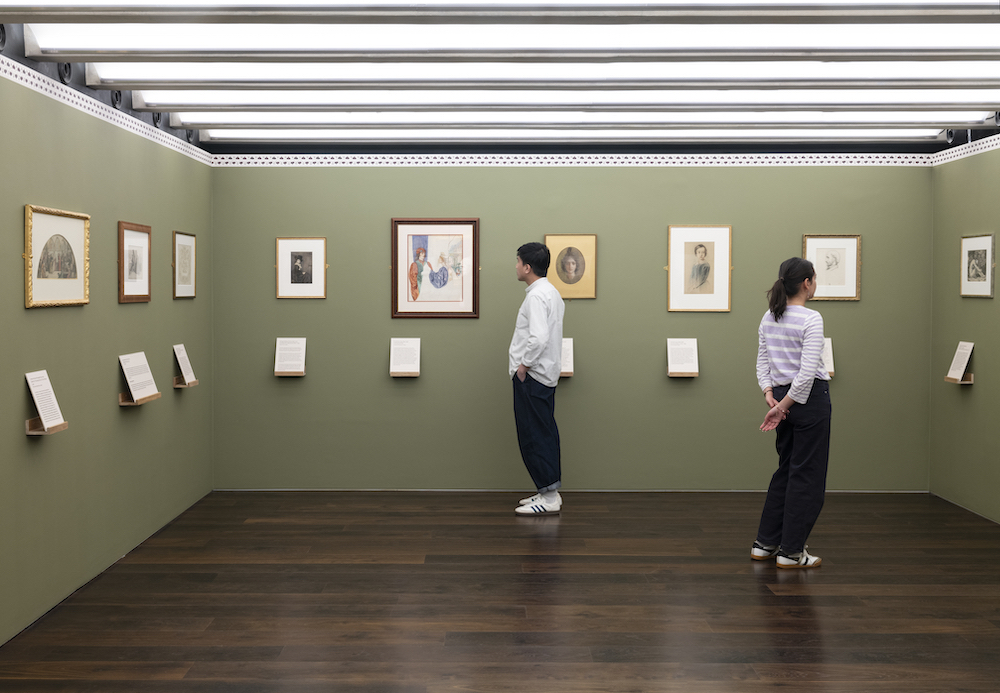
Art of a very different order is currently on display until 21 September at the Leighton House Museum, and last month Dennis T. Lanigan visited Victorian Treasures from the Cecil French Bequest and Scott Thomas Buckle Collection there. Yes, we're proud to say that that's the very same Scott who kindly proofreads new work in our paintings section for us. Scott has just added comments of his own, too, to the discussion of a design for a fresco by F.R. Pickersgill. The exhibition review includes some gems from both collections, from a watercolour version of Edward Burne-Jones's The Wheel of Fortune, of 1875, to Anna Lee Merritt's lovely pen and black wash Study for Eve of c.1885.
Online now as well is another major section by Dennis, on the artist William J. Webb(e), showing many of his finest but rarely seen works, thanks to the kind permission of Christie's. Two examples are The White Owl and Ruth: An Eastern Gleaner. For the former, we only had a black-and-white reproduction, which really did it no justice at all; the latter is an example of Webbe's Orientalism. But a personal favourite is Webbe's very English Chanticleer and the Fox. Dennis has also contributed to a new section on the artist Alfred Secheverl[l] Coke, most strikingly perhaps with this depiction of Salome.
In case you want something more scary than cunning foxes (or less scary than Jack the Ripper), try our prolific Contributing Editor Philip Allingham's latest illustrations for Rider Haggard's She: here are Leo and Holly on the cliff (yes, a real cliffhanger!). Philip has also updated the section on Arthur Hopkins's illustrations for Hardy's The Return of the Native, with new scans and commentaries: here's Hopkins's dramatic rendering of (in Philip's words) the "tragic and sensational conclusion" of Eustacia Vye.... For those less inclined to the sensational, but still in need of a change, Philip has provided a pleasant alternative: a new series of picturesque illustrations of Victorian Scotland, mainly of Edinburgh. He also came across a touching elegy for Trollope by Mowbray Morris (1847-1911), then the drama critic of the Times and later the editor of Macmillan's Magazine.
Belatedly making good a gap in our "Gender Matters" coverage, Joan Grant has reviewed what is probably the definitive book on James Barry, the army doctor whose identity as a woman was only revealed on her deathbed: Michael Du Preez and Jeremy Dronfield's Dr James, Barry, a Woman ahead of Her Time tells an extraordinary story, but one which perhaps we can understand much better now.
The new section on the artist A.S. Coke, mentioned above, was started by another new contributor, the Rev'd Simon Shouler, who had acquired Coke's Our Lady Mary and Child for St Remigius Church, Long Clawson, Leicestershire, and thought of sharing his researches into it with us — a very welcome gesture.
It was a particular pleasure to hear from the well-known and ever-enthusiastic Ruskinian, Jim Spates, at whose suggestion JB extended the list of recommended compendia of Ruskin's writings, and gave it a new look. He is now selecting and introducing passages from Ruskin that may be less familiar to us, and yield fresh insights into some of his most important ideas — like this appreciation of the undulating snake in The Queen of the Air.
In the French section, too, something new for this very productive month: Lauren Wright's translations of a chronology and biography of Emily Brontë. These, too, could not be more welcome.
Many thanks, as ever, to Shirley Nicholson as well as Scott Buckle for always much-needed proofreading.
Correspondence: We're so grateful to Carrie Starren, who cleared up a bit of the artist Alfred Coke's family history for us, by sending in scans of historic documents. Accuracy is all-important! Thanks also to Sandra Haigh, Community Heritage Services Co-ordinator, Kaiwhakarite Ratonga Tikanga Hapori, for providing information about the settlement of Katikati in New Zealand. It was kind of Rosa Waby, a student who took the trouble to write in as well, just to say, "thank you so much for this fantastic website - I've spent hours pouring through the different articles to further my studies and it's made me increasingly interested in Victorian literature...." That's very cheering for us all. We're grateful also to Keith Wood, who wrote about the progress of his ambitious Great Exhibition simulation project. Here's a taste of it, so far, on YouTube: https://youtu.be/9wNEgZDetNk - we've got material on quite a few of the exhibits (which is why we're in touch), but not on the revolutionary conveniences shown near the beginning!
May 2025

ay, with its holiday weekend following close on the previous one, opened quietly, but there were still some new announcements for our conference listings, so check those out: the University of East Anglia's autumn conference on alliteration, for example, promises much of interest for Victorianists, and calls for short abstracts for papers by 25 May. If you've missed the deadline, see what else is on offer! And have a look too at the very tempting list of books being offered for review: along with the list, our Managing Editor Diane Josefowicz, has produced some very useful guidelines for reviewers. Be sure to read them before you get in touch.
JB's work on Frederic Villiers continued with what was to be his swansong, a selection of his moving sketches of trench warfare at the beginning of World War I. This joins the work of the longer-lived Victorian artists of all kinds, eminent sculptors and stained-glass designers included, whose last masterpieces were produced at this time, often in the form of war memorials. Villiers' sketches work rather like that too. One of the most moving depicts the brief 1914 Christmas truce in the trenches; another, the American ambulance workers who (as perhaps few realise) assisted right from the beginning of the war and in the very thick of battle. Still looking across the pond, JB added two more new items, one to the George Eliot gallery, on the frontispiece to an American edition of Daniel Deronda: "Gwendolen at the Gaming Table"; the other, inspired by the month and the events at the Vatican, a commentary on Gerard Manley Hopkins's "The May Magnificat."
From our Contributing Editor for Canada comes another new and comprehensive book review: Philip Allingham discusses Maria Damkjær's innovatory Fiction on the Page in Nineteenth-Century Magazines. Amongst Philip's other new contributions are his additional comments on some of J.M.W. Turner's paintings, like the popular Fighting Temeraire. Philip has also finalised his work on the illustrations by Edward Killingworth Johnson and Maurice Greiffenhagen for Rider Haggard's SHE. Galleries of these can be accessed here (see under the sub-heading, "Illustration"), and clicking on the images will lead to full discussions of them. It has been quite a dramatic as well as a lengthy project! Here's a sample: Greiffenhagan's "Steer for your life, Mahomed!", showing Horace Holly and his attendant, Job, exchanging the "homely Cam" for the more challenging African rapids, early in their adventures....
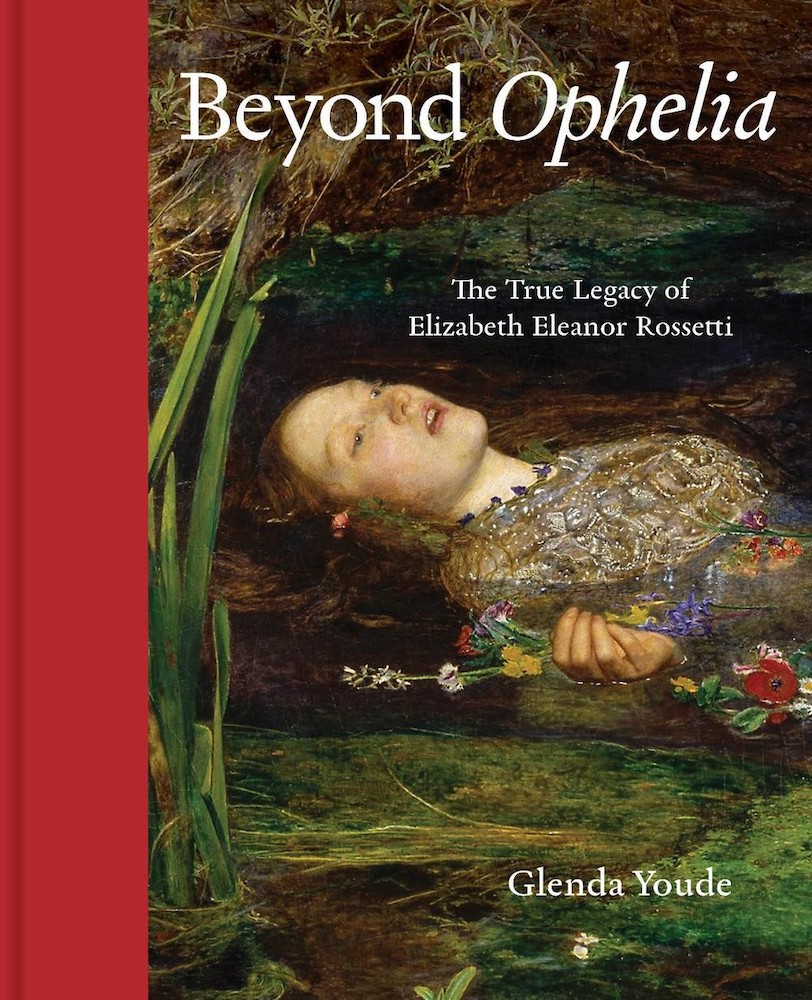
We're delighted to have Pamela Gerrish Nunn's review of Glenda Youde's new book, hot off the press this this month, Beyond Ophelia: The True Legacy of Elizabeth Eleanor Rossetti (better known as Lizzie Siddal, Rossetti's model and the most artistically gifted of his "fair ladies").
A quite different addition to the site is Tony Schwab's "Hypertext Journey" through probably the most profound and personal of our Victorian Web books, George Landow's Images of Crisis. This is especially rewarding for proponents of our project as a whole: our website is much more than an information medium or series of essays/entries/blogs. Tony starts with a quotation from the author and mystic, Thomas Merton: “...you opened the seas before my ship, whose track led me across the waters to a place I had never dreamed of...” and he follows our founding Editor-in-Chief across a great variety of works, in literature and the visual arts, highlighting "significant moments" and "illuminations" which can give us the freedom to chart our own voyage through life. Nothing could better illustrate George's belief in the "synergy that derives from linking materials together" (p. 181 in George's pioneering Hypertext 3: Critical Theory and New Media in an Age of Globalization, 2006). Tony has responded just as George would have wanted, and gathered in the process just the kind of inspiration that he forecast.
Different again: JB's chance finding of an old copy of the Musical Times led to the inclusion of an obituary of Mendelssohn in our music and drama section, and some other improvements in this area. For more inspiration, you can listen to his Venetian Boat Song here, if you have 3 minutes to spare!
Some splendid photographs came in this month, too: first, of the Knaresborough Viaduct, taken by our Contributing Photographer Colin Price, which allowed us to include that picturesque structure in our bridges and viaducts section; and then, of Margaret Giles's bas-relief, The Labourers in the Vineyard, taken by Deborah Schultz, Senior Lecturer in Art History at Regent's University, London. The relief is now to be found, beautifully lit, in the Brasserie there, and Deborah hopes to uncover its history for us. Coming in later, and very welcome too, were photographs contributed by Judith Flanders, of the author Amy Levy's grave marker in Balls Pond cemetery, and of the cemetery itself. We're very much hoping to follow the restoration project for this neglected plot, the last resting place of some of the most eminent members of the Jewish community in Victorian times. All these photos needed some explanation and discussion, but none more so than the last one this month: Tim Willasey-Wilsey's photograph of a memorial plaque to William Sleeman, famous for having suppressed thuggee in India — what a great find!
Correspondence: Many thanks to Alden Loveshade for spotting a typo in our section on Elizabeth Barrett Browning; also to Duncan France, who kindly emailed from New Zealand to point out a slip in our pre-Victorian section, in our biography of Henry Fielding. Please do help us correct typos and update links. Two new followers on our fledgling Bluesky account wrote appreciatively of our website, one plainly amazed at how long we've been going (yes, in digital terms, we are practically prehistoric!).
April 2025
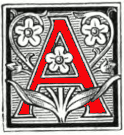
pril's first news item is that Dennis T. Lanigan has now finished revising and enlarging our section on the paintings of the Pre-Raphaelite artist, Arthur Hughes. This brilliant series of commentaries has kindly been proofread for us by another art historian, Scott Buckle, who, as usual, added some useful suggestions of his own. One such suggestion was about the influence of Hughes on Lewis Carroll, who admired Hughes tremendously: of his visit to the Royal Academy, Carroll wrote: "I could find no pictures more beautiful than Arthur Hughes's Music Party, though many were very beautiful." Scott joins in the debate about whether Carroll's portrayal of Alice was influenced by Hughes's The Lady with the Lilacs. Nothing on our website is seen in isolation!
In that connection, one of the new intiatives of our Managing Editor, Diane Josefowicz, has been to start suggesting tours of the website. Do look at our new page listing her first few recommendations, and remember that clicking on "next" at the top of every page can lead you into all sorts of surprising corners of the Victorian world.
Like Dennis Lanigan, JB also completed a new project, albeit a much smaller one, in the visual arts: to introduce the "Rogue Gothic" architect E. Bassett Keeling, and give some examples of his work, such as St George's church on Campden Hill, Kensington (still there, though altered), and the highly controversial, very short-lived but unexpectedly influential Strand Music Hall (demolished). Many thanks to contributing photographer John Salmon for providing some lovely photographs of the church.
JB opened another new section, too, this time on Frederic Villiers, whose on-the-spot battlefield sketches and escapades made him a legend in his own lifetime — although an "at home" interview with him in the late nineteenth century does suggest some reasons why his fame hasn't travelled well.
Nevertheless, he had his impact at the time — a time when illustration, generally, was having a major and even transformative influence on readers, authors, artists and publishers alike. This makes our next item, a book review from our Senior Editor, Simon Cooke, particularly important. Simon examines Julia Thomas's The Victorian Mind's Eye: Reading Literature in an Age of Illustration, and finds much to recommend it, suggesting that it provides a whole new conceptual framework for future scholars in the area.
Still in the illustration section, Contributing Editor Philip Allingham has completed his set of pictorial covers for the Graphic, each with a helpful commentary — a demanding project because the subjects are important topical events, from the conflicts in Serbia and Burma, to exhibitions in big cities like Edinburgh, to new theatres like the one in Oxford. These all required individual explanations and even more links than usual to (and from) material elsewhere on the website. They also involved a rearrangement and updating of the main and already substantial Graphic page. Here are numerous glimpses of the complicated, many-faceted and always fascinating age as it unrolled, by some of the best artist-illustrators of the time.
Two off-shoots of Philip's project are new works from the Graphic by John Gordon Thomson, who provided some of its most striking illustrations, like this one for F. E. West's "A Cottage by the Sea"; and the introduction of another new illustrator who contributed to the journal over several decades: Edward Killingworth Johnson. Johnson's best-known commission was to illustrate H. Rider Haggard's She: A History of Adventure on its first appearance there — these illustrations are yet to come. Meanwhile, Philip expanded his earlier work on Dickens's chair — yes, that famous one which captured the imagination when he left it, forlornly empty, at the end of his busy life.
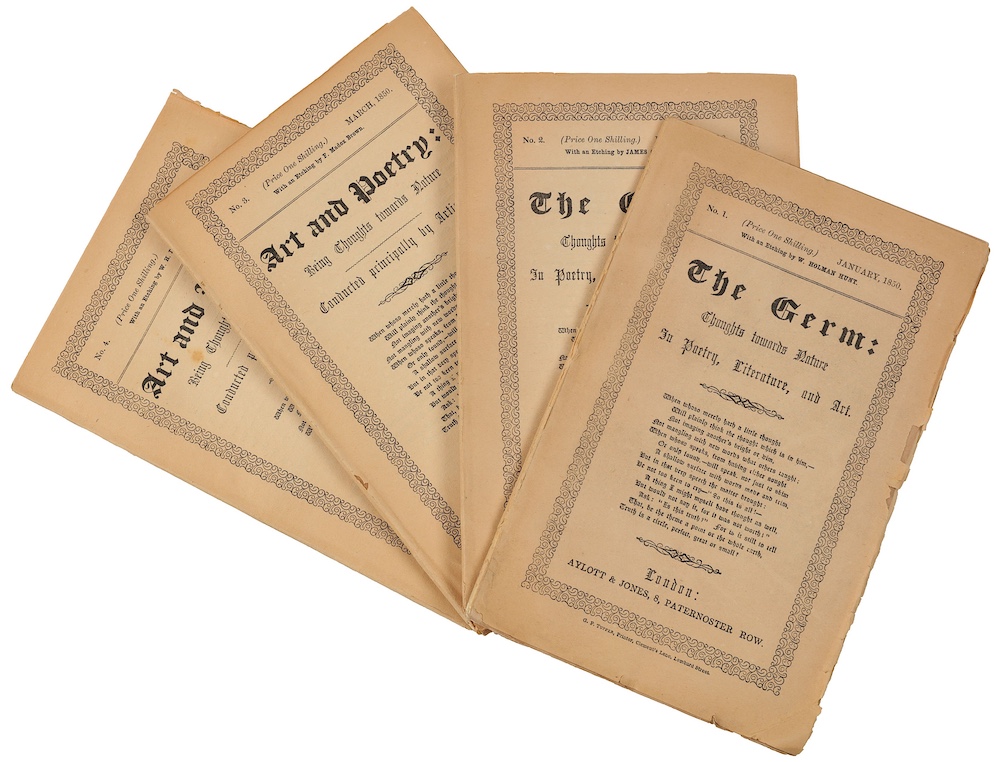
Another well-developed area of our website is the section on the Pre-Raphaelite artists, and here Dennis T. Lanigan has just come forward again with an account of the Germ and the etchings contributed to it by various leading members of the brotherhood. A good example (indeed the best) is the pair of etchings contributed by William Holman Hunt, My Beautiful Lady and Of My Lady in Death.
Dennis's last contribution for the month is about the sculptor Thomas Maclean, giving a brief biography of him and a full account of his sculpture, Ione, a very attractive work commended by one critic as "entirely fresh and natural" — a good example of the New Sculpture.
Please note that such projects are rarely if ever truly complete. There are many more paintings by Arthur Hughes, hundreds more Graphic covers, many more talented illustrators, etc. etc. Our site is always growing. The longer daylight hours bring more temptations to leave the desk. Still, our industrious editors and contributors continue to enrich the website!
March 2025
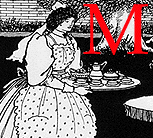
arch seemed to ambush us: there were tight deadlines for submissions for some of our new conference announcements, but if you missed the dates for William Morris and Material Culture and Oscar Wilde's Francophilia, there is still a range of other tempting topics to choose from. The first deadline next month (1 April!) is for the Rocky Mountain Modern Language Association's 78th Annual Convention in Spokane, which offers opportunities to those working in any area of nineteenth-century studies.
Online in the Victorian Web this month is a whole variety of new pieces. Inspired by the new play about her (The Vegan Tigress, mentioned in February's "What's New"), JB has written an introduction to Mary De Morgan, whose subversive fairytales, feminism and political beliefs have been overshadowed by the achievements of her more famous brother and sister-in-law, William and Evelyn De Morgan. She also added a review of two books on the eighties: Nineteenth-Century Literature in Transition: The 1880s, edited by Penny Fielding and Andrew Taylor, and Literature, Print Culture, and Media Technology, 1880-1900, by Richard Menke. The first chapter in the former features two paintings, Evelyn De Morgan's Maidens of the Sea, and Edward Burne-Jones's The Depths of the Sea, which are now discussed on our website too.
Photographs sent in by one of our contributors, Lucy Paquette, enabled JB to include statues of Queen Victoria (by Sir Joseph Edgar Boehm) and Prince Albert (by William Theed) in Sydney; more to come here. These were followed by photographs of a splendid stained glass window by Stephen Adam in Buenos Aires, taken by Alejandro Vetere, Director of a school housed in a beautiful old mansion there, where the window brightens a staircase. It turns out that the mansion was built in 1888 by an English official of the Western Railway, living in Argentina. How the Victorians and their work travelled!
Another place they travelled to was Africa, where our Senior Editor, Simon Cooke, has taken a close look at an uncomfortable subject that we haven't covered before: the Anglo-Zulu war. How did we see it then? How was it represented in contemporary illustrations (in newspapers, periodicals and cartoons), photographs and military paintings, and how have we revisited it in film since then? Simon's fully-illustrated essay, with its interdisciplinary approach, is both fascinating and instructive.
Meanwhile, Philip Allingham, our Contributing Editor from Canada and an expert on Dickens illustrations, has turned aside from his favourite author for a while to revise and rescan Robert Barnes's illustrations for Hardy's The Mayor of Casterbridge. Here's one of the latest, with some interesting comments on costume in the 1840s: Farfrae was footing a quaint little dance with Elizabeth-Jane. This was followed by galleries of his work (which is really worth discovering), including one in which Philip skilfully brings together his contributions to periodicals.
Once again, we are putting on line a whole set of new commentaries on a Pre-Raphaelite artist by Dennis T. Lanigan. This month it's the turn of Arthur Hughes. Already complete are a new biography for him, and discussions and contemporary reviews of such favourites as his Ophelia and April Love. Many more have have followed, and Dennis has sent in images of his stained glass series on Tristram and Isoude, starting here, which are far better than the ones we already had (in colour, for one thing). An essay on Hughes's justly admired illustrations to Christina Rossetti's Sing-Song completed his wide-ranging body of new work on Hughes. Dennis has also kindly contributed a portrait to JB's new section on Mary De Morgan, and, in the painting section, two of the later watercolours of Inglis Sheldon-Williams, like this one, Showery Weather, rather suitable to the present season.
Correspondence: Alden Loveshade and Lily Alexander have both done some useful proofreading for us (in other words, they spotted typos, and took the trouble to write in about them!). As usual, that is very, very welcome. Philip Parker of the Lynchpin Theatre kindly allowed us to reproduce a still from the company's acclaimed production of The Vegan Tigress about Mary De Morgan. We are also grateful to Ray Russell for querying a rather important detail in our brief introduction to the artist and illustrator Joseph Syddall, and this has duly been corrected.
February 2025
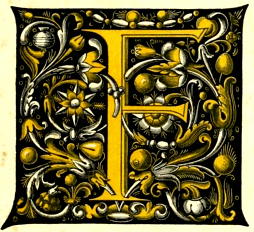
ebruary strikes again, with its blasts of cold air. However, we extend a warm welcome to our readers, and are very happy to report that we already have an abundance of new work on the desktop (if not yet online). Note that the deadline for submissions to the Conference of the International Walter Pater Society at Cornell (7 February) has now passed, but, thanks to our editorial assistant Nigel Finch, new conferences have already been added, so check out our listing, and note especially that submissions for Patrick Leary's generous Field Development Grant (The Research Society for Victorian Periodicals) need to be in by 15 March. That's not far ahead, either!
Readers might like to know that our Managing Editor, Diane Josefowicz, continues to liaise with our technical team on future improvements to the website, to take charge of the conference listings, and to arrange for book reviews; while our History Editor, Dory Agazarian, is also working behind the scenes to build up our podcast project, "What the Dickens?!" Have a listen to the entertaining and informative episodes that Dory has already presented, and don't forget we also have list of recommended podcasts from other sources.
In amongst her own editing duties, JB finished two new book reviews at the turn of the last month. One is of Joan Grant's booklet, It's not Notting Hill, It's Ladbroke Grove, which discusses some Victorian buildings in that part of London. This inspired new accounts of the Elgin pub, with its wonderful interior, and St Charles' Hospital (built for the "sick poor"), both still serving the community in their very different ways. The other review is of Nicholas Olsberg's hugely impressive and very enjoyable The Master Builder: William Butterfield and His Times. This in turn entailed some new work, notably, on Butterfield's chapel and New Big School projects at Rugby.
Coming across a wonderful old print of the Greenwich Railway Viaduct (opened 1836, the first elevated train service in the world!), JB also wrote a piece on that, and was intrigued to see a little windmill sitting beside the new structure, in a rural landscape. Some people complained about the loss of nature then. What would they say if they saw the area now? On another topic entirely, JB discussed John Tenniel's Punch cartoon, The Haunted Lady, or 'The Ghost' in the Looking-Glass, a comment on the exploitation of seamstresses who catered for the rich and fashionable, and its sometimes tragic results. And on yet another topic, JB introduced and added an excerpt from the Illustrated London News's report on Doulton's display at the Paris Exhibition of 1873, which reveals the methods of producing their award-winning ceramics, and the number of women designers involved.
Our Senior Editor, Simon Cooke, started the month with a real scoop: Richard Doyle's quirky illustrations from a very rare little book, The Christening Procession of Prince Taffy (1842), starting with this funny but touching one of Queen Victoria carrying her new first-born at arm's length on a cushion, ahead of her own mother, her wet and dry nurses, etc. (the wet nurse being suitably well endowed). So this is how the future Edward VII entered the public stage!

Also rare is a new set of mainly colour "Character Sketches" by the Dickens illustrator Fred Barnard. These are being put online by our Contributing Editor for Canada, Philip Allingham. The latest depicts Dick Swiveller and the Marchioness from The Old Curiosity Shop, and Philip has written a comprehensive essay about the various illustrators' versions of this quintessentially Dickensian pair. Many more have followed since then, perhaps the most dynamic being this one (left) of Barnaby Rudge, with his pet raven, Grip. Each is beautifully reproduced and, of course, since this is Philip's area, fully discussed. Why not cycle though them, starting (where better?) with the unforgettable Mrs Gamp? Just follow the "Next," either in the arrows at the top of the page, or in the blue tile at its foot.
We are really fortunate with our new material this month: art historian Dennis T. Lanigan has just opened a section on the artist and activist Barbara Bodichon. Apart from discussing some lovely examples of her watercolours, such as View from my window: Maentwrog, Snowdonia, Wales, he has written a very informative essay on three drawings of Lizzie Siddal by Bodichon herself, Anna Mary Howitt and Dante Gabriel Rossetti, from Lizzie's trip to Hastings for her health — poignant enough in view of her already all-too-apparent frailty. Many thanks to Dennis's fellow art-historian, Scott Buckle, for proof-reading the section and making some helpful suggestions here.
Informative in a completely different area is an essay dedicated to Rita Wood, who suggested the topic, but, sadly, is no longer here to see it online — Susan Major, a new contributor, has written about Scoria Bricks in the Back Alleys of York. Scoria production was started in the mid-Victorian period by Joseph Woodward, who saw a unique recycling opportunity in the accumulation of industrial waste.... yet another example of the Victorians' ingenuity and can-do mentality.
Back to Dickens (who is never very far from the mind in Victorian studies): Peter J. Capuano kindly won permission from Cornell University Press to share with us two extracts of his recent book, Dickens's Idiomatic Imagination: The Inimitable and Victorian Body Language. One is on Bleak House, the other on Our Mutual Friend. These are especially interesting for the light they throw not only the novels but on their author, and for the way they show how digital tools can aid close reading of the text. Michelle Allen-Emerson's review of the whole book helps to put these extracts in context: we're grateful to Review 19 for letting us reprint such reviews here.
Many thanks, too, to Shirley Nicholson for some much-needed proof-reading (do please volunteer for this useful task, if you have time and inclination!) and also for identifying two of our previously unattributed Punch cartoons, one of them a great personal favourite: "Welcome!" celebrates opening day at the (then) brand new National Portrait Gallery, where Victorianists can go to feel at home among old friends.
Towards the end of the month, we were delighted to receive Jeffrey Begeal's review of Florence’s English Cemetery, 1827–1877: Thunders of White Silence, by Julia Bolton Holloway. The cemetery is the last resting-place of Elizabeth Barrett Browning and so many others in the Anglo-Florentine community of Victorian times, and the book is the culmination of Julia Holloway's years of dedication to restoring it, and (with fellow members of the association founded for this purpose, like Jeffrey himself), researching its rich history.
Correspondence: Sarah Dean writes to inform us of her new website (www.richardansdell.co.uk) about her great-great-grandfather, the artist Richard Ansdell RA, best known for his paintings of animals. We also heard from Keith Wood about the latest updates to his state-of-the-art VR simulation of the Great Exhibition, which now includes another steam locomotive and Newcastle ornithologist John Hancock's taxidermy specimens. For more details, see here: https://store.steampowered.com/news/app/2618260/view/526459570713788802. Another heads-up: Philip J. Parker writes to remind us that it is the 175th anniversary of Mary De Morgan on Monday 24 February – the perfect time to catch the new play celebrating her work, The Vegan Tigress. This is running at Clapham's Bread and Roses Theatre in London just until 1 March. The reviews are excellent: "The writing is sharp, funny, and fast-paced... It was with childlike wonder that I soaked up this story." Want to know more? Read on at https://everything-theatre.co.uk/2025/02/review-the-vegan-tigress-bread-and-roses-theatre/ @LynchPinTheatre.
January 2025

Season's Greetings and best wishes from us all for a very happy and fulfilling New Year! As our Managing Editor, Diane Josefowicz, sends 2024 down into the archives, let's hope 2025 will enrich our website and make it even more diverse and rewarding. On a personal note, entering her fifth year as Editor-in-Chief, JB would like to express her gratitude to all who have continued to contribute, or started to contribute, during that time, as well as to the other members of the Foundation and Editorial Boards for their support. Following George Landow's highly knowledgeable and energetic leadership has been a challenge as well as a privilege, and the fact that the site is still growing and thriving is largely down to his inspiration. Thank you, George, as ever.
This may be the place to mention one of George's initiatives, which we plan to develop. He had started making some tours of different areas of the website, such as this one, of London buildings. Do try it! More will follow. And, as usual, please remember to check out the latest calls for papers. The topic of the 57th Annual VSAO (Victorian Studies Association of Ontario) Conference is particularly timely: "Victorian Conviviality and Entertainments" (and note that the deadline for submissions is 24 January).
Despite the distractions of the holiday period, several projects have continued or even come to fruition. Thanks to the good folk at St Augustine's of Hippo, Edgbaston, JB was able to add their splendid church to the new section on J. A. Chatwin, and Emeritus Churchwarden Stephen Hartland kindly sent in a highly entertaining newspaper clipping, in which a visitor extols both the area and the church, while slyly poking fun at local pretentions. This church's fine musical tradition reminded her of Henry Woodyer's St Martin's Church in Dorking, which has a memorial to Ralph Vaughan Williams, so that came in for some new attention (thanks to David Dixon for his photographs of the interior).
Another very rewarding project was completed soon afterwards: Philip Jackson sent in a series of five articles from the Lady's Pictorial profiling its women contributors, thus putting names (and sometimes faces) to them, and giving details about their careers. These could be incorporated into JB's new alphabetically arranged index to editors and journalists, making them easier to find. This is a brilliant new addition to the study of both the periodicals themselves, and women's huge contribution to this field. JB also added a review of Brigid Allen's joint biography of Emily Eden and her brother Lord Auckland. Emily accompanied her brother to India where he served as Governor-General, and was implicated in the disastrous aftermath of the First Afghan War. But, as her writings suggest, Emily was a fascinating character in her own right, and both siblings deserve re-assessment now.
Next, the Pre-Raphaelite Society allowed our Senior Editor, Simon Cooke (who established our link with it), to select and format for our website two of the essays from the latest issue of their journal. One is Cecilia Rose's intriguing and prize-winning essay. "A Secret Preoccupation: John William Waterhouse and the Occult." Thanks to Simon, we can now see how women's demonstrations of their esoteric powers went beyond séances and table-rapping, and inspired some of Waterhouse's most admired paintings. The other article that Simon selected, intriguingly entitled "An Elephant, a Rhino, and a Mickey Finn," is Kirsty Stonell Walker's examination of the effects of chloral on Dante Gabriel Rossetti's life and relationship with his model, Fanny Cornforth. Complex relationships come under scrutiny again, this time in literature, in Simon's own review of Katie R. Peel's recently published Readers and Mistresses: Kept Women in Victorian Literature.
In true Victorian spirit, Philip Allingham has been fully immersed in his local pantomime season, but has sneaked a little time to improve on some of the twenty-year-old scans in the Dickens gallery. One that shows Dickens standing nonchalantly in his porch at Gadshill is especially evocative. Other improvements were to his material on the Household Edition: the cover and frontispiece of the final volume are particularly handsome, but many more of the illustrations have now been rescanned and more fully considered. Another notable example is Fred Barnard's illustration of the wretched end of a degenerate, washed up on the bank of the Thames, in Sketches by Boz, an interesting example of the "Found Drowned" trope found in The Old Curiosity Shop (Quilp's death) and elsewhere. Philip also rescanned and added new material to illustrations of Michael Black's novel Three Feathers, which led JB to open a new section on this novelist (who was seen as the equal of Trollope and others in his time), with a short biography of him and an introduction to the novel itself.
Most exciting of all is the whole extended section on the artist William Dyce, with more than 20 paintings comprehensively discussed by Dennis Lanigan, all carefully proofread by Scott Thomas Buckle. This is a major contribution, because Dyce was influenced by or directly involved in so many of the important strands of nineteenth-century culture, from the German Nazarenes and the Pre-Raphaelites in art, to High Church Tractarianism, to scientific studies in astronomy and geology, and to photography. But paintings like Pegwell Bay and Christabel also stand alone as some of the most memorable masterpieces of the age.
Another holiday treat was to hear from our French translator, Sabrina Laurent, who added a number of James Tissot's paintings to our French section (where they certainly belong as well), including a poignant depiction of the ailing Mrs. Newton asleep in a Conservatory Chair [Mrs. Newton endormie sur une chaise dans la véranda].
More recently (mid-month) Laurent Bury has reviewed a new book in the promising new field of reception studies: Medievalism and Reception, edited by Ellie Crookes and Ika Willis. Several chapters discuss the way the Victorians responded to the Middle Ages, offering new approaches to the literature (including some works by women historians and novelists) and wider culture of the period.
With the end of the month already approaching, DJ has brought in an exciting new piece on Victorians and the Discovery of X-Rays by Nicole Lobdell, which is knowledgable, thought-provoking and enjoyable to read — exactly the qualities we seek to present. There's more than meets the eye here, indeed: had you ever thought, for instance, how this new discovery tied in with the Victorians' deep fascination with the unseen?
Correspondence: we were very sad to learn that Rita Wood, whom Simon introduced to us in 2019, and who built up our section on York architects, passed away at the end of last year. She had been unwell for a long time, but continued to contribute until very near the end, and we shall miss her greatly. Just to give you an idea of her work, here is her piece on the beautiful Chapter House at York Minster (as is apparent here, Rita loved and was especially knowledgable about church tiles).
Last modified 5 December 2025